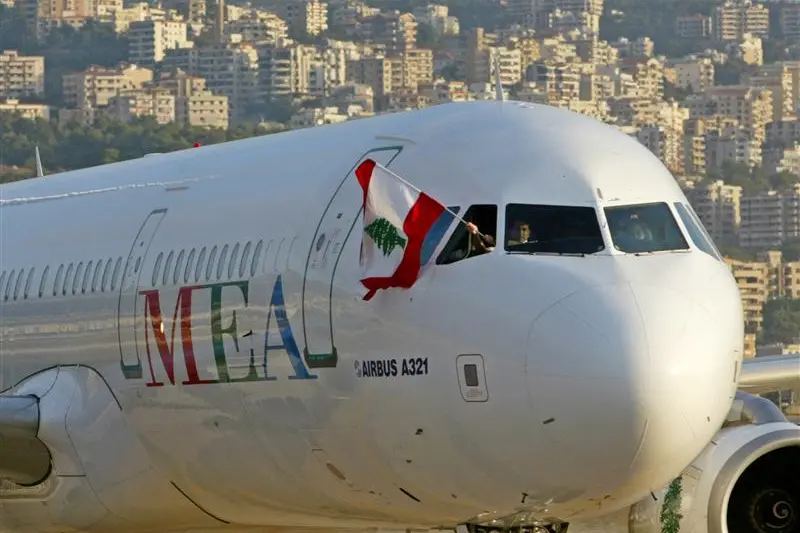PHOTO
08 September 2016
DOHA: The Middle Eastern airlines, including the three major carriers of the GCC region, posted the strongest passenger demand growth in July among all other regional carriers in the world, witnessing a double-digit increase of 13.1 percent (year-on-year), against the global average of 7.1 percent.
The demand had dipped in June owing to the timing of Ramadan and summer holidays. Capacity rose 15.5 percent, causing load factor to drop 1.7 percentage points to 78.6 percent, data released by the International Air Transport Association (IATA) show. The IATA, which represents some 265 airlines comprising 83 percent of global air traffic, announced the global passenger traffic results for July showing an acceleration in demand growth over the previous five months. Total revenue passenger kilometers (RPKs) rose 5.9 percent, compared to the same month last year, with all regions reporting growth. Monthly capacity (available seat kilometers or ASKs) increased by 6.0 percent, and load factor was 83.7 percent --just 0.1 percentage point below the record July high achieved in 2015.
"July saw demand strengthen, after a softening in June. Demand was stimulated by lower fares which, in turn, were supported by lower oil prices. And near record high load factors demonstrate that people want to travel. But, there are some important sub-plots to the narrative of strong demand. Long-haul travel to Europe, for example, suffered in the aftermath of a spate of terrorist attacks. And the mature domestic markets are seeing demand growth stall while Brazil and Russia contract," said Alexandre de Juniac (pictured), IATA's Director General and CEO.
The international passenger demand in July rose 7.1 percent compared to July 2015, which was an increase over the 5.0 percent yearly increase in June. Airlines in all regions recorded growth. Total capacity climbed 7.3 percent, causing load factor to slip 0.2 percent percentage points to 83.5 percent.
Asia-Pacific airlines' witnessed the second highest growth of 9.8 percent in passenger traffic growth compared to the year-ago period. Capacity increased 8.6 percent and load factor climbed 0.9 percentage points to 81.7 percent. Reports suggest that Asian passengers are putting off traveling to Europe in favor of regional trips owing to terrorism fears: while traffic on Asia-Europe routes fell by 0.9 percent in June, international traffic within Asia rose 8.1 percent, which was a four-month high.
While the European carriers saw July demand increased by 4.1 percent compared to a year ago, which was the slowest among the regions. Demand has been affected by the recent terrorist attacks as well as political instability in parts of the region: traffic has grown at an annualized rate of just 1.4 percent since March. Capacity climbed 4.7 percent and load factor dipped 0.5 percentage points to 86.7 percent, which was still the highest among regions.
DOHA: The Middle Eastern airlines, including the three major carriers of the GCC region, posted the strongest passenger demand growth in July among all other regional carriers in the world, witnessing a double-digit increase of 13.1 percent (year-on-year), against the global average of 7.1 percent.
The demand had dipped in June owing to the timing of Ramadan and summer holidays. Capacity rose 15.5 percent, causing load factor to drop 1.7 percentage points to 78.6 percent, data released by the International Air Transport Association (IATA) show. The IATA, which represents some 265 airlines comprising 83 percent of global air traffic, announced the global passenger traffic results for July showing an acceleration in demand growth over the previous five months. Total revenue passenger kilometers (RPKs) rose 5.9 percent, compared to the same month last year, with all regions reporting growth. Monthly capacity (available seat kilometers or ASKs) increased by 6.0 percent, and load factor was 83.7 percent --just 0.1 percentage point below the record July high achieved in 2015.
"July saw demand strengthen, after a softening in June. Demand was stimulated by lower fares which, in turn, were supported by lower oil prices. And near record high load factors demonstrate that people want to travel. But, there are some important sub-plots to the narrative of strong demand. Long-haul travel to Europe, for example, suffered in the aftermath of a spate of terrorist attacks. And the mature domestic markets are seeing demand growth stall while Brazil and Russia contract," said Alexandre de Juniac (pictured), IATA's Director General and CEO.
The international passenger demand in July rose 7.1 percent compared to July 2015, which was an increase over the 5.0 percent yearly increase in June. Airlines in all regions recorded growth. Total capacity climbed 7.3 percent, causing load factor to slip 0.2 percent percentage points to 83.5 percent.
Asia-Pacific airlines' witnessed the second highest growth of 9.8 percent in passenger traffic growth compared to the year-ago period. Capacity increased 8.6 percent and load factor climbed 0.9 percentage points to 81.7 percent. Reports suggest that Asian passengers are putting off traveling to Europe in favor of regional trips owing to terrorism fears: while traffic on Asia-Europe routes fell by 0.9 percent in June, international traffic within Asia rose 8.1 percent, which was a four-month high.
While the European carriers saw July demand increased by 4.1 percent compared to a year ago, which was the slowest among the regions. Demand has been affected by the recent terrorist attacks as well as political instability in parts of the region: traffic has grown at an annualized rate of just 1.4 percent since March. Capacity climbed 4.7 percent and load factor dipped 0.5 percentage points to 86.7 percent, which was still the highest among regions.
© The Peninsula 2016












